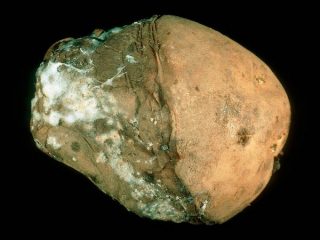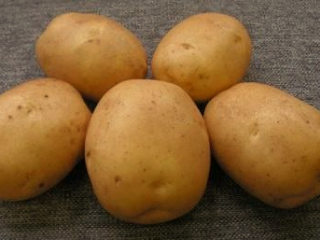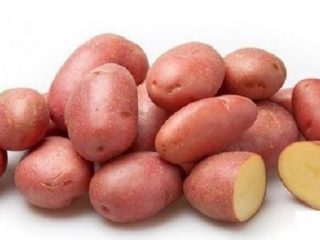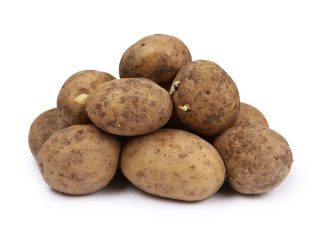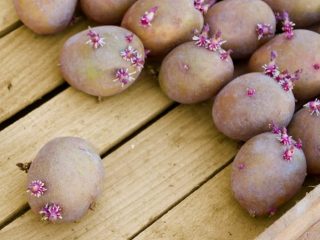Content
Potato Nikulinsky is a domestic variety obtained in the 1990s. It has a very high starch content - can reach up to 21%. It boils well, is suitable for stewing and producing starch. It is undemanding in terms of care, but requires regular feeding, especially organic matter.
History of origin
Nikulinsky is a domestic potato variety. It was bred by a team of breeders: Sklyarova N.P., Pisarev B.A., Popov M.F., Rudnev A.N. and others.
An application for approval of the Nikulinsky variety was submitted in 1992. The variety passed successful tests and was included in the register of breeding achievements in 1996. The originator is the Federal Potato Research Center named after. Lorha." The current license was issued in December 2020, valid until December 31, 2025.
Description of potato variety Nikulinsky
The variety is productive, has good taste and commercial qualities.A description of the bush, tubers and main characteristics is presented below.
Bush
The Nikulinsky potato bush is distinguished by its large height - it often reaches 80 cm. A characteristic feature is good foliage. The stem is erect and produces many lateral shoots. The leaves are slightly elongated and have jagged edges. The color is green, with a beautiful emerald tint visible.
The corollas of Nikulinsky potatoes have different colors - red with blue and purple tints. The tips are pure white both inside and outside. The berries are light green, turning brown over time.
Tubers
Each Nikulinsky potato bush produces from 8 to 12 root crops. They have medium and moderately large sizes, weight from 70 to 140 g. The shape is oval-round. The color of the peel is beige, light in color. Mesh surface.
The pulp has a cream color. After cutting, cooking, frying, it does not change color. The eyes are of medium depth, barely noticeable, numerous. Product yield ranges from 71% to 95%. The shelf life indicator is very good - 95%. If the conditions are met, almost all tubers can be preserved for several months.
Characteristics of Nikulinsky potatoes
The variety has good taste and high starch content. It can be used for cultivation both in personal plots and for sale.
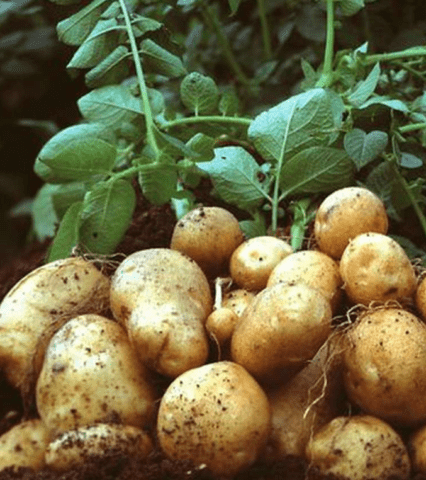
Tubers are round in shape, with smooth skin
Taste qualities of Nikulinsky potatoes
The taste qualities of many summer residents are assessed as good and excellent. This is due to the fact that Nikulinsky potatoes contain a lot of starch - the mass fraction reaches from 12.5% to 21.3%. Potatoes are crumbly, great for cooking: mashed potatoes, potato pancakes, stews, potato flour.
Ripening time for Nikulinsky potatoes
Potato Nikulinsky is a mid-late variety. From the appearance of mass shoots to full ripening, an average of 120 days pass. If you plant potatoes in early May, the harvest can be harvested after four months, i.e. in mid-September.
Productivity
The productivity of the Nikulinsky variety is quite high - according to commercial indicators, it reaches 170-295 centners per hectare. At the same time, the maximum figure was registered in the Ivanovo region - 410 c. When grown on a private plot, one hundred square meters can actually produce an average of 200-250 kg, often up to 300 kg of tubers.
Where is it grown?
According to the State Register, the Nikulinsky potato variety can be grown in most regions of Russia from central Russia to Siberia:
- central regions;
- Volga region;
- Chernozem region;
- Northwest;
- Ural;
- Western Siberia.
The culture is unpretentious and adapts well to different climatic conditions. If grown on fertile soils and provided with at least minimal care, the potatoes will indeed be very tasty and crumbly.
Disease resistance
The Nikulinsky potato variety is immune to cancer and viral diseases. Resistance to late blight is moderate on tops, weak on tubers. May suffer from common scab, blackleg, as well as insect pests. Therefore, during cultivation it is recommended to carry out at least one fungicide treatment:
- "Maksim";
- "Skor";
- "Abiga Peak";
- "Ridomil Gold".
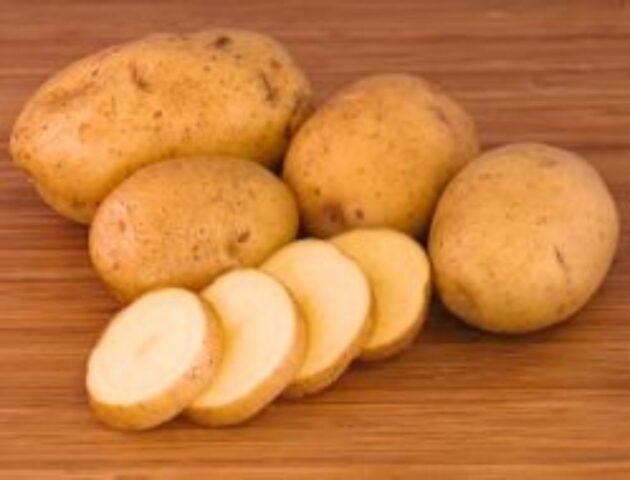
Potatoes need preventive treatments against diseases and pests
To protect the Nikulinsky variety from insects, insecticides are used:
- "Aktara";
- "Fufanon";
- "Decis";
- "Karate" and others.
It is necessary to take into account the waiting period - the minimum amount of time from the last spraying to harvesting.
Pros and cons of the variety
The Nikulinsky potato variety has many objective advantages. This is a productive crop that produces tubers with a very good taste. Potatoes do not require care. Therefore, both experienced and novice summer residents can grow it.
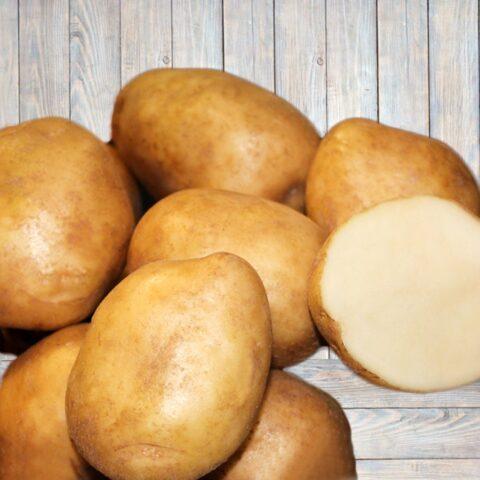
The Nikulinsky variety is distinguished by a high proportion of starch - more than 20%
Pros:
- increased productivity;
- excellent taste;
- immunity to certain diseases and pests;
- high yield of marketable tubers;
- root vegetables are smooth and of regular shape;
- good shelf life;
- can be grown in regions with different climatic conditions.
Minuses:
- demanding when it comes to fertilizing;
- if grown on poor quality soils, the taste is mediocre;
- weak immunity to late blight, scab, blackleg;
- relatively late ripening.
Landing rules
It is advisable to grow Nikulinsky potatoes on fertile and light soils with a loose structure. Loams with a high content of chernozem and a neutral environment (pH about 7.0) are well suited. It is better to prepare for planting 1-2 months in advance. The site should be open and not located in a low area where water accumulates.
The soil is dug up, compost or humus is added in an amount of 8-10 kg per square meter. If the soil contains a lot of clay, it is worth covering up with sawdust or sand - 1 kg for the same area.
A month before planting begins (i.e., at the beginning of April), potatoes of the Nikulinsky variety need to start germinating. Unsuitable tubers should be removed - dried, damaged, too small. Then suitable seeds are placed in a bright, cool room. They can be laid on the floor in three layers.Periodically spray water with a growth stimulator, for example, “Kornevin”.
When landing, proceed as follows:
- Several furrows are formed in the direction from north to south in increments of 60 cm.
- Holes 10 cm deep are made every 30 cm.
- They put one Nikulinsky potato tuber in them.
- You can sprinkle with a pinch of wood ash.
- Cover with soil.
Features of care
Potatoes of the Nikulinsky variety are not particularly demanding in terms of care. It is worth considering that it is responsive to feeding. When caring, experienced summer residents recommend following the following rules:
- Feed three times per season. You can alternate mineral fertilizers with organic matter. For example, on the eve of hilling, pour in mullein infusion (1:10); during the formation of buds, give potassium salt (25 g per 10 l) and ash (200 g per 10 l). During flowering, add superphosphate (40 g per 10 l) or give mullein again.
- Water as needed. If it rains periodically, water may not be provided. But if there is a drought, water weekly.
- Hilling is carried out after the seedlings have reached a height of 15 cm. After this, another hilling is carried out two weeks later.
- Weeding - as needed.
- After heavy rains and watering, it is advisable to loosen the soil. This will ensure air flow to the roots of the Nikulinsky potato. Thanks to this, it will grow faster and the tubers will become larger.
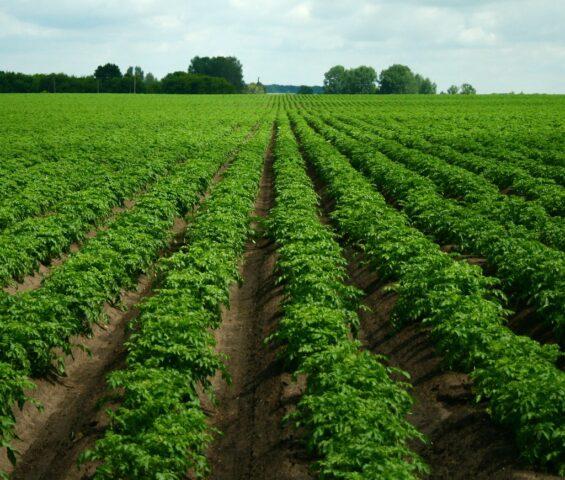
Hilling is carried out 2-3 times per season
When to dig Nikulinsky potatoes
Nikulinsky potatoes begin to be dug from the end of August.The main wave of harvesting occurs in mid-September - exactly four months after the mass emergence of seedlings. For work, it is better to choose a warm day without rain.
2-3 weeks before the harvest day, they stop watering. The tops are mowed within 10 days (or a little earlier). Immediately after digging, the tubers are allowed to lie on the ground to dry. Next they are sorted. They try to use large and especially large ones first.
Small and medium root crops of Nikulinsky potatoes are sent for storage. At first they are kept in a cool room (10-15 degrees). Then they are placed in a cellar or storage and kept in a temperature range of 2-4 degrees. Humidity should be moderate - within 70-80%.
Conclusion
Nikulinsky potatoes are one of the best starchy varieties. Produces marketable tubers with an attractive appearance. It can be grown both for personal use and for sale. The variety is undemanding to care, but requires fertilizing. It adapts well to different weather conditions, so it can be grown even in the northern regions and Western Siberia.
Reviews from gardeners about Nikulinsky potatoes



